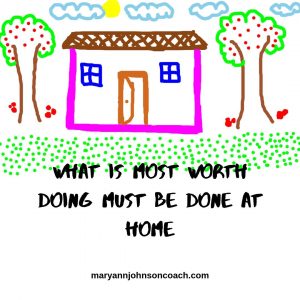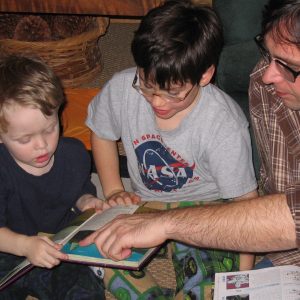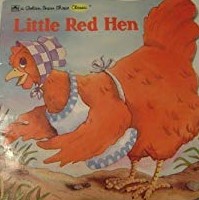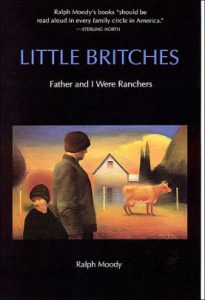Did you know that happiness begins at home?

In a study of thirteen to twenty-four-year-olds conducted by the Associated Press and MTV, more than 100 questions were asked of 1,280 young people. The questions were all centered on determining what made these youth happy. Can you guess the number one answer? Spending time with family! Yup, that’s right, spending time with family. (Associated Press, “Youth Happiness Study,” 2).
And even better, in the AP-MTV study, nearly three-quarters of those youth and young adults said that their relationship with their parents made them happy (Associated Press, “Youth Happiness Study”). What kids and youth want are you and a close relationship with their family! They long for that connected ‘family feeling’.
So, what goes into creating that connected family feeling that kids and youth want, that makes them happy?
1. T-I-M-E spent with those they love and trust. We can best serve our children if we practice being present with them. When kids know they are seen and heard they are more trusting and will come to us when they’re in trouble and need help. Being present takes giving minutes of your time consistently. It doesn’t have to an hour or even thirty minutes. Three minutes, a few times a day is a great place to start.
2. Learn to listen. It takes effort to clear your mind and hear another person. It’s called active listening. We aren’t looking for answers to their stuff or formulating a rebuttal. We’re just hearing to understand. Teaching and problem solving can come later.
3. Utilize bedtimes. This is true even for youth. Spending just 3 minutes sitting on our child’s bed, touching an arm, allowing them to talk if they want to is huge in creating connected relationships.
4. Work together. Yup, chores, when done right, are magically bonding. It takes a bit of work on our part and we may get a bit less done, but it says volumes to our children about their place in the home and their value in our eyes.
5. Manage technology. Being home is only connecting if we’re doing things to connect. Recently I visited a friend on a Sunday afternoon. Both Mom and Dad had been using their computers before I arrived, one in the study and one at the kitchen table. Their older son was in the family room playing a video game on the TV. Two young children were lying on their stomachs on the floor, each with an iPad. Their older daughter was in her room talking and texting on her cell phone. Now, this is a normal, ordinary family, but these Sunday afternoon activities were isolating, lonely, and de-energizing.
This wouldn’t be a problem if it happened one afternoon, but it is a problem for families if it occurs three or more days a week. We begin to lose our sense of family, the connectedness that gives a child a feeling of stability and support, a sense of belonging and safety. What if I’d found them reading together or playing soccer in the backyard or watching a movie together? Even if no one spoke a word during the movie, at least they would have been together; possibly sitting on the couch by one another, cuddled in a parent’s lap or sitting by a sibling. There would have at least been a sense that this was a family, that they liked each other and enjoyed being together.
6. Eat together. The dinner table can be a place of unification. It can give your family a sense of belonging to something that matters. During the years, when some of our children were making poor choices, the time at the dinner table held us together. If we couldn’t agree on the best way to live, we could at least eat together. It kept us face-to-face and heart-to-heart. We didn’t try to teach or reprimand during these meals. We stayed out of management and worked on the relationships. This effort didn’t stop our children from making choices we didn’t agree with, but it kept our children bonded to us until they were ready to make changes. It kept us unified as a family.
Even when mealtimes feel hectic or disorganized, they have long-term benefits for children because if parents remain calm, kids aren’t stressed by dinnertime chaos.
Anne Fishel, Ph.D., said, “Over the past 15 years researchers have confirmed what parents have known for a long time: sharing a family meal is good for the spirit, the brain and the health of all family members” (Fishel 2016).
7. Read together – From Scholastic’s Kids and Family Reading Report, we learn only 17 percent of parents of kids aged 9–11 read aloud to their children. Yet 83 percent of kids aged 6–17 say being read to is something they either loved or liked a lot (Scholastic Inc. and YouGov 2014).
What are some of the benefits of reading as a family?
- Reading aloud allows you and your children to achieve physical closeness. You are all in the same space at the same time.
- Gathering together as a family and reading creates a sense of security and safety—a feeling that all is right with the world
- There’s a sense of belonging which comes from everyone being in the same room, snuggling and listening to the same story, having a shared experience. This can be especially helpful as our children begin to mature. They’re trying to figure themselves out as well as figure out where they fit in the world. This process of personal growth can bring a sense of isolation. Reading as a family is one of the ways parents can create a sense of belonging.
Spending money doesn’t build relationships. Giving your kids’ stuff doesn’t build relationships. Leagues and classes, lessons and even educating a child at home don’t necessarily build relationships. These things may help your child as they grow. They may better equip them to succeed in the world financially. There isn’t anything wrong with providing these things.
However, relationships are built when we learn to be Present with another human being, when we spend time together, listen to each other, and show that they matter to us. In the final analysis, a good relationship with trusted adults is one of the key elements of happy children and youth.
What is most worth doing must be done at home. Kids want to spend time at home with their family. They want and need that ‘family feeling’. They want to feel connected. They want to matter!
Want to know how you can make bedtime, meals, and chores work with your teens? Get more information FREE by downloading Chapter 4 of my book Becoming A Present Parent: Connecting with your Children in Five Minutes or Less. For information on many aspects of creating a more connected home buy the book on Amazon or in any good bookstore.



 March 4th was the birthday of Dr. Seuss.
March 4th was the birthday of Dr. Seuss. One classic that my children loved was The Little Red Hen. Yup, it’s a classic. I know that we think of classics as dry and boring, but they aren’t. Here’s a link to a wonderful list of classic books I put together that kids and families will love.
One classic that my children loved was The Little Red Hen. Yup, it’s a classic. I know that we think of classics as dry and boring, but they aren’t. Here’s a link to a wonderful list of classic books I put together that kids and families will love. which he knew he shouldn’t share, and which caused his older brother some embarrassment. Later in a private moment, the younger boy said to his mom, “I guess I have taken some of the boards off of my house”, in reference to a comment by Ralph, the lead character in the book. Ralph was referring to doing something that was destroying his house of character.
which he knew he shouldn’t share, and which caused his older brother some embarrassment. Later in a private moment, the younger boy said to his mom, “I guess I have taken some of the boards off of my house”, in reference to a comment by Ralph, the lead character in the book. Ralph was referring to doing something that was destroying his house of character.